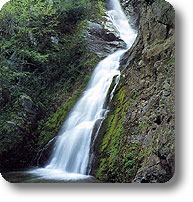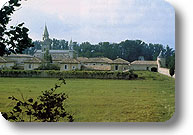
 |
Parco Naturale Regionale delle Serre |
Points of Interest |
|
|
|

|
Nature protection sanctuary established with D.P.G.R. n. 557 of 12/05/1975. Currently the management of the nature sanctuary is entrusted to WWF Italia. The lake is a fauna protection area and has been declared wetland of international value, according to the RAMSAR convention (D.M. 30/09/1985). The artificial lake covers an area of 875 ha; along its shores there are interesting small woods of hygrophilous species typical of the flood plain vegetational formations. The territory of the nature sanctuary lies within the Municipalities of Francavilla Angitola, Maierato, Monterosso Calabro, Pizzo Calabro, and Polia. The wetland is also important for the rich presence of ducks, coots, and stilts, above all during the migration and wintering periods, from September to April. Although the nature sanctuary had been recognized as a wetland of international importance according to the above-mentioned convention, it was not considered a protected area according to the law 394/91, and it has therefore been included in the Park perimeter. |
Nursery and Small Lakes on the Hills |
|
| In the Park there is also the forest nursery "Ariola": it covers an area of about 12 hectares and is used for the production of plants aimed at the conservation of biodiversity. The nursery lies in the Municipality of Gerocarne. The annual nursery production is of about 1.200 plants, out of which the 35% in containers (pots of different size) and others with bare roots. The most representative broadleaved trees are Chestnut trees, Walnuts, Pear trees, Strawberry trees, Alders, Oaks, Maples, etc.; the conifers are: Silver Fir, Spruce Fir, Cypress tree, Juniper, Austrian Pine, etc. In the greenhouses, typical plants of the tropical climate (palms, etc.) grow. The production is completed with various shrubs belonging to the Mediterranean maquis. Most of the nursery production is used for reforestation activities, reconstruction of deteriorated woods, forest and water system works, creation of outer green furniture for the urban areas. In the Park you can also find the following small lakes against fires: "Favello, "Figliuzzi", "Merenda", "Ponte Giacchino", "Rosarella", "San Salvatore", and "Porticella" homogeneously scattered throughout the territory. Finally, the artificial basin of Lacina (river Alaco) is important for the amount of water it contains. |
|
Places of Historical-Artistic Interest |
|
 |
Certosa Abbey and Museum - Serra S. BrunoToday, in the place where probably the cells of the first Carthusian monks were situated in the past, there is a chapel called «Cappella di San Bruno» and another one dedicated to the Virgin Mary, called «Madonna di Casalibus». The life of the first monks living in Gran Certosa is known thanks to the testimony of the writer Guigo, in "Vita di Sant'Ugo", and of the traveler Guiberto di Nogent. From these documents, adding some information contained in the «Consuetudini» by Guigo and some important sentences found in the letters of San Bruno, Pietro il Venerabile, and San Bernardo, a picturesque description of fervor, austerity, and authentic monastic spirit emerges. Further information (Italian text) |
|
|
|
Sanctuary of Santa Maria del Bosco and Sepulcher of San Bruno - Serra S. BrunoSurrounded by centuries-old Silver Firs and young Beech trees, the complex of the Sanctuary of Santa Maria del Bosco is the most interesting place of Serra San Bruno, as far as tourism and religion are concerned. Further information (Italian text) |
|
|
|
|
Monterosso CalabroCraftsmanship and Farming Museum |
|
|
|
|
MongianaMongiana is situated in the middle of Serre Calabre, between the Ionian Sea and the Tyrrhenian Sea, in a nature sanctuary of green and luxuriant conifer and broadleaved tree woods. Worth visiting: Villa Vittoria |